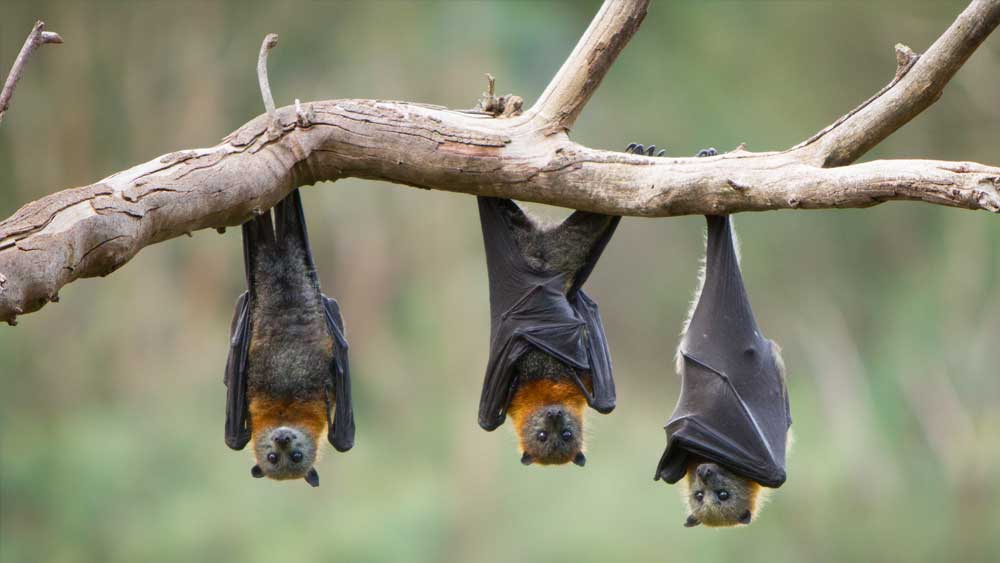Bats are a large and fascinating group of flying mammals. They include 1,240 species. Not surprisingly, the fossil record shows bats have always been bats. They suddenly appear in a most un-Darwinian manner.
According to a recent evolutionary publication, “Bats pop up in the fossil record around 50 million years ago.”1 The article continues,
Scientists are left with some big questions. For one thing: The 50-million-year-old bat specimens are already recognizable as bats, so where did they come from? When, where, why and how the first bats become airborne is another mystery buried by Deep Time.1
Mammals in general also have a cryptic origin as well as their diversification, “While the origin of mammals has provided one set of puzzles, the diversification of mammals is also ripe with questions.”2
Two bat fossils found in early Eocene sediments in Wyoming (Icaronycteris and Onychonycteris) are still 100% bats. In fact, they are already designed with their “feet … turned backwards so that these early bats could hang upside down as modern bats do.”3
This is indeed an enigma for Darwinists. Think of all the transitions that must occur to turn a creature such as a rodent4 into a bat. The front legs must slowly turn into membranous wings with an amazing aerodynamic ability. Biosonar (or echolocation) must evolve where there was no biosonar. Is it any wonder that “the evolution of echolocation in bats has been hard to resolve.”5
Non-evolutionists predict that the origin of bats will always be one of evolution’s greatest puzzles, because bats were created as bats on Day 5 of Creation Week just thousands of years ago.
References
1. Black, R. Why Bats Are One of Evolution’s Greatest Puzzles. Smithsonian Magazine. Published on smithsonianmag.com April 21, 2020, accessed April 23, 2020. Bats have been discussed in recent world news. See Areddy, J. T. China Bat Expert Says Her Wuhan Lab Wasn’t Source of New Coronavirus: Internationally respected virologist who sequences bat viruses finds herself in spotlight over Covid-19. Wall Street Journal. Posted on WSJ.com April 21, 2020, accessed April 23, 2020.
2. Black, R. Why Bats Are One of Evolution’s Greatest Puzzles. Smithsonian Magazine. Published on smithsonianmag.com April 21, 2020, accessed April 23, 2020.
3. Smith, K. 2015. Placental Evolution in Therian Mammals. In Great Transformations in Vertebrate Evolution. K. Dial, et al, ed. University of Chicago Press, 205.
4. Benton, M. 2015. Vertebrate Paleontology, 4th Edition. Wily Blackwell, 376.
5. Sherwin, F. 2016. The Rodent Record. Acts & Facts. 45(4).
6. Benton, 376.
*Mr. Sherwin is Research Associate is at ICR. He earned his master’s in zoology from the University of Northern Colorado.













